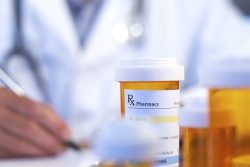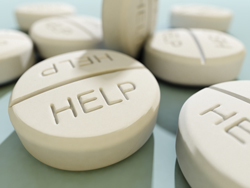There is no doubt that heroin addictions are continuing to rise. Despite the efforts of law enforcement to deter trafficking and distributions, stigmas and fears attached to its use, and the protective factors we hope we instill in our loved ones, the heroin, today, is more potent and powerfully addictive than ever before.
Most heroin addicts will have a difficult time maintaining any significant long-term abstinence without some sort of pharmacological help using buprenorphine or methadone combined with education, counseling, behavioral therapies, and support services to retain them in treatment and promote recovery engagement.
Safety and Comfort in Detox
Withdrawals from heroin are more threatening than withdrawals from most other substances because heroin acts fast in the brain to enact its effects on the central nervous system and the neuro-adaptations are intense. When the heroin in the body is reduced, bodily systems rebel to produce a variety of adverse symptoms. While most heroin withdrawals will run their course over a few days and the physical symptoms of pain, vomiting, diarrhea, and weakness will subside, the residual effects on the central nervous system causes a great deal of psychological upheaval and cravings.
Keeping the heroin addict comfortable and monitoring for complications is a big part of detox treatment that deals with their physical withdrawal symptoms as well as the psychological aspects of cravings, depression, or anxiety that can lead to an early relapse if not properly managed. Compromised health issues may become exacerbated by the withdrawals and some problems can lead to stroke, coma, heart attack, or death if not properly attended to. Using medications to alleviate the distress is more than a comforting tool; it helps the person slowly rebalance those disrupted systems that can lead to more dangers down the road.
Medication Assisted Treatment (MAT)
According to the NIDA, “Although behavioral and pharmacologic treatments can be extremely useful when utilized alone, research shows that for some people, integrating both types of treatments is the most effective approach. ” There are a variety of medications that can be used in heroin addiction treatments from medically supervised detox to maintenance programs that last indefinitely. Methadone and buprenorphine are medications that act as agonist and partial agonist drugs, respectively. Their use can be tailored to a person’s recovery needs while taking into account any co-occurring health conditions.
Methadone has the longest running history of effectiveness in heroin addiction treatment programs and is available through Opioid Treatment Programs (OTPs) that are certified and accredited by the SAMHSA to dispense methadone daily in accordance with federal, state, and local laws. OTP providers offer the most up-to date and qualified heroin addiction treatment services, resources, and referrals in conjunction with medication dispensing and behavioral therapies.
Buprenorphine is a partial agonist that has been considered less abusive than methadone and with improved access and a unique safety profile, can be obtained through a certified physician with less restrictions than methadone. According to the SAMHSA buprenorphine’s desirable pharmacological properties are:
- lower abuse potential
- lower level of physical dependence (less withdrawal discomfort)
- a ceiling effect at higher doses
- greater safety in overdose compared with opioid full agonists
Addressing Problems
Heroin addiction treatment must be a multifaceted approach to deal with the many problems that the heroin dependent faces in the short-term as well as helping them achieve long-term improvement in their health, home life, community, and purpose. According to the SAMHSA, recovery is defined as “A process of change through which individuals improve their health and wellness, live a self-directed life, and strive to reach their full potential.”
The problems of heroin addicts far exceed problems in generalized society. Some medical problems have to do with the unknown variants that are used in heroin processing methods and those that are used as it is stepped on down the path of distribution. Others have to deal with how the heroin is administered, which is usually by injection, although some will snort or smoke the drug which helps to disguise their abuse. Infections, AIDS, hepatitis, HIV, tuberculosis, and STD’s are problems that run rampant among this population and the psychological impacts of dealing with any of them is typically undermined by the stigmas of using heroin in the first place.
According to the Institute of Medicine (US),”Heroin-dependent persons have a number of social problems, including difficulty in holding jobs, obeying laws, maintaining stable marriages, making and keeping friends, and functioning as caring and responsible parents.” Addressing the issues that are unique to each individual involves strategic plans that only work as long as the heroin addict and the counselors agree in achieving goals that are of the best interest for the heroin addict.
Recovery is a Life-long Process
Providing referrals and access to necessary resources as needed is crucial to motivations in the heroin addiction treatment process. It isn’t a one size fits all type of healing, respect for the goals of the individual are enhanced through medical and psychiatric interventions, support and family involvements, and psychosocial services that help the person become self-sufficient and confident in their abstinence.
Peer support groups offer an advantage to gain insight and stay on top of the recovery which is a lifelong process. Learning to avoid triggers, take things in stride, and if relapse occurs, which it does in most, take it as a learning experience and seek help to get back on track without becoming discouraged.










